The Genius is the second bike in Scott’s range to benefit from the brand’s pursuit of integration. It’s new sleek and uninterrupted silhouette isn’t only easy on the eye but also translates into a unique all-mountain bike experience that balances incredible stiffness with huge efficiency and capability, making it one of the best trail bikes you can buy. That said, the 900 Ultimate model pictured here is reserved for those with cavernous pockets.
- off-road Opinion - E-bikes aren't a menace, it's all about trail etiquette
- Privateer 141 GX Pike review
- What is singletrack?
Scott Genius 900 Ultimate - Technical details
Scott has taken much of the tech that was made famous by the Spark cross-country bike, as well as its focus on integration and has shifted it to a long-legged trail, or all-mountain platform with 150mm of travel at the rear and 160mm up front. The 900 Ultimate model in particular leans heavily into pedalling efficiency and lightweight in a bid towards all-out versatility. And that theme is clear both in its specification and its ride character.
>Buy the Scott Genius 900 Ultimate from Tredz for £11,999
There’s an awful lot to unpack with this iteration of the Genius, so let’s start off with the frame. This 900 Ultimate model benefits from Scott’s high-end HMX carbon layup which is claimed to be 20% stiffer than its HMF counterpart of the same weight. It’s said that it costs three times as much as the lower-end HMF fibre, too, according to Scott’s Carbon Experts website.
Scott has given its stiffness and lightweight zone principal to the Genius, so it gets reinforcement in certain areas so the designers can shave weight elsewhere. The bike weighed in on a Park Tool DS-1 at just 13.2kg, which is ridiculously light for a bike of this category. That’s with a Syncros iS Cache Bottle Cage attached, too.
Let’s address the elephant in the room, the integrated shock. It’s beautifully hidden above the bottom bracket and this whole construction is where you’ll notice the biggest difference against previous iterations of the Genius. Moving the shock inside of the frame has posed a range of advantages, according to Scott’s engineers. Firstly, it allows the shock to be mounted lower in the frame, which in turn lowers the bike’s centre of gravity, which should improve handling but it’s also boosted stiffness around the bottom bracket.
The Fox Nude 5T Factory EVOL Trunnion shock kitted to the 900 Ultimate model is accessed through a door at the bottom of the down tube and this is where Scott’s collaboration with Fox really comes into play. It’s allowed the designers to create a shock entirely for this bike, meaning that all adjustments are well within reach. The door also makes the internal cable routing easier to maintain. The shock is simple to remove too and isn’t too dissimilar to how you would remove a non-integrated shock.
This partnership has also resulted in a shock that’s tuned for the Genius, and to make the absolute most of Scott’s TwinLoc switch. TwinLoc offers three suspension modes at the flick of a lever. Descend mode opens up both of the Nude 5T’s positive chambers and combines them to offer the full amount of travel. Scott says that in this mode, the shock is optimized for downhill performance when referring to air spring rate and damping.
In Traction Control mode, one of the positive air chambers is cut off which reduces the shock’s overall air volume. This reduces suspension travel and results in a more progressive spring curve. Compression damping is also increased. However, another aim of this mode is to morph the Genius’s geometry by increasing the bottom bracket height and slightly steepening the seat tube, making for a more pedal-friendly shape.
Of course, the final mode is a lockout but it’s been designed to offer a bit of squish to take the sting out of bigger hits. While the fork comes with open, traction, and lockout modes, it doesn’t feature Nude tech, so doesn’t benefit from the mode-specific tunes.
It’s not just the shock that gets Scott’s integration focus because there’s internal cable routing that’s routed through the head tube, and when paired with Syncros’ new Hixon IC one-piece handlebar and stem, makes for a very tidy front end. That bar also comes with a Garmin mount on top of the stem.
The Genius runs 29-inch wheels with no option for a mullet configuration but its geometry is right on the money for a bike of its category. The large frame pictured here features a 485mm reach, a 77.2-degree seat tube angle, and a 65.1-degree head angle. The chainstay measures 440mm and the wheelbase is 1,263mm. There is some adjustment in the head tube angle thanks to rotatable headset cups, which shifts the angle to 63.9-degrees.
Scott Genius 900 Ultimate - Specification
Onto the Genius 900 Ultimate’s specification and it’s dripping with high-end kit and almost everything that can be made from carbon, is. I’ve already mentioned the Fox Nude 5T Factory shock, so handling the front 160mm of suspension is a Fox 36 Factory with the FIT4 damper. Both of these are adjustable on the fly thanks to Scott’s TwinLoc 2 suspension and dropper post remotes.
SRAM has the shifting covered with an XX1 Eagle AXS groupset with that mega blingy oil slick chain and 10-52T cassette. That’s then matched with the XX1 carbon crank.
Moving onto the brakes, and they deviate from SRAM's range, instead, Scott has opted for Shimano’s XTR levers with four-piston calipers. At the front of the bike, there’s a 203mm rotor and a 180mm rotor at the rear.
Scott’s component brand, Syncros supplies a good heap of the bike’s componentry, including the Duncan Dropper post with 170mm of drop on this large frame, and the carbon Tofino saddle. The bike rolls on a pair of Syncros’s recent Revelstoke 1.0s carbon wheels and they’re shod with a pair of 2.6in Maxxis Dissector tyres with EXO casings and 3C MaxxTerra compounds.
Finally, there’s the Syncros Hixon IC Carbon handlebar, as mentioned before. This is 780mm wide and gets a 25mm rise on this size of bike. It then features eight degrees of back sweep. There’s no mention of the effective stem length on this bike but the bar is available aftermarket with either 40mm or 50mm lengths.
Something that our test bike didn’t come with, that the consumer bike will is a pair of SRAM TyreWizs. Before moving on, the Genius is littered with integrated tools with a 6mm Allen, T30, and T25 tools found on the rear axle, and a tubeless repair kit in the bar ends.
Scott Genius 900 Ultimate - Set-up
The set-up of the Genius is well worth a mention solely due to that integrated shock and I’m pleased to report that it’s as easy and straightforward as it should be. Granted, removing and replacing the shock door is a smidge of extra work, done with a push of a button, but the external sag indicator made the suspension set-up super simple.
Scott’s collaboration with Fox in creating the Nude shock has paid off in more ways than one. The shock’s Schrader valve is located at the bottom of the shock, right behind the door and the rebound dial is more of a lever that’s easily fettled with using a single finger.
While the integrated shock and the door do create a better seal against the elements, it’s by no means a complete seal. I’ve tested the bike in a range of conditions and the shock does have a coating of dirt. However, it’s in much better condition after a couple of months of riding in the autumn/winter than an externally mounted shock after a single day in the slop.
Scott Genius 900 Ultimate - Performance
My time with the Scott Genius 900 Ultimate saw all kinds of riding, from donkey trails in the Alps to steep tech back on home turf with a good number of lengthy traverses thrown in for good measure. Through all of these conditions and terrains, the Genius excelled, offering a platform that’s a doddle to pedal while remaining composed, and capable while descending. Though throughout my test period, I diverted from the Dissector tyres for something a bit more aggressive to suit the autumnal to wintery conditions I was presented, we’ll go into more detail on why a bit later.
Within my first few pedal strokes, I found the Genius to be very familiar but mostly because its geometry is bang in line with a range of bikes of this travel range. There’s very little to complain about when saddled, as it’s a neutral but comfortable riding position. However, I would swap the saddle as the Tofino didn’t suit me particularly well.
With the suspension wide open, it’s surprising how solid the Genius is when pedalling. Little energy is wasted on unnecessary movement in the suspension but shifting the suspension into its closed setting is akin to sticking the Millenium Falcon into hyperdrive. It noticeably stiffens the shock and further improves the bike's behaviour while pedalling, upping efficiency drastically. The smidge of squish in the closed setting is very welcomed, as it takes the edge off of harder uphill impacts.
In fact, before riding the Genius, I was very sceptical about how much I would use TwinLoc, preconceiving it as something that’ll quickly become redundant. Even though the bike's pedalling is nothing short of respectable in its open position, I used it at any opportunity and sometimes, even mid-descent.
I won’t lie, there have been a couple of moments where I’ve fumbled and accidentally pressed the dropper instead of the lockout, and vice versa, but with time, those occasions became less. Then, the ease of use and that increased efficiency that TwinLoc offers got me kitting the bike with more aggressive tyre choices, in the wet especially, as it effectively counteracts the increased drag.
When faced with more technical climbs, flicking the suspension into Traction mode offered a welcome balance of increased efficiency and well - traction. Although, I used this setting less frequently due to how well the Genius pedals in its open position.
The Genius is all about stiffness and that’s crystal clear when the speeds ramp up, and then when the descents roll through, and for the most part, that’s a good thing, resulting in a fun and playful ride but there is one area where there's too much of a good thing. I say that because that Hixon handlebar is mighty stiff. While Scott has made a few tweaks to increase its compliance, it’s rare I go a ride without experiencing some level of arm pump. I this were my bike, I would have swapped the bar for something a bit more traditional. Thankfully Syncros does offer a stem that retains the integrated look of the bike but can accommodate your favourite handlebar.
Ignoring the bar, the stiffness present in almost every other facet of the bike affects its ride massively. The Genius feels like one, solid piece through the corners in a way that’s only found on hardtails and that results in a very precise and racy characteristic. It’s not one that every rider will appreciate as some lateral compliance can increase overall grip but when slapping berms, the bike gives back, sacrificing no energy to flex, resulting in more speed.
The suspension kinematic that Scott’s engineers have dialled in is progressive but impressively adaptable. I’ve run the Genius from just over 25% sag through to 35% and thanks to the progression built in, bottoming out hasn’t occurred much, or at least harsh and noticeable ones. Pedalling wasn’t harmed too much either but of course, more sag resulted in better performance over small bumps. Nevertheless, the kinematic balances composure with a playful and engaging ride as it’s pushed past the sag point.
Its feathery weight (for its category) gives this bike a welcoming lively side. It’s incredibly easy to pick up and hop lines as and when but that well-tuned suspension kinematic keeps it from becoming a total handful. It’s composed when it needs to be, but it can become an absolutely fun machine once it lets its hair down.
Those three things combined, the suspension kinematic, the refusal to flex and the lightweight makes the Genius one spritely little machine when sprinting. At any point where there's a loss in momentum, a few swift pedal strokes quickly regain speed, which is aided by a shed full of mid-stroke support. It's a bike that really gives back what you put in.
Though, on the subject of the suspension, the shock can get warm. On the comparatively short UK trails, it’s rarely (I mean incredibly rarely) an issue but it’s one I noticed in the Alps and when it’s working especially hard over extended periods of time. This then leads to the shock’s damping tapering off. In the UK, this hasn’t been noticeable but if you’re one to ride super lengthy descents regularly, you’ll be better off with the more gravity-focused ST Tuned model as it benefits from a shock equipped with a piggyback reservoir, which fends off heat build up a more effectively.
As touched on before, the geometry of the Genius is spot on for its category and in practice, on the descents, there’s very little to grumble about. It’s lengthy enough to offer good stability at speed and the head angle rustles up a confident level of support when rolling through steeper sections. But the bike isn’t so long that it stifles agility. In the head angle’s slackest setting, the front end can wander a little when pedalling uphill but if that’s an issue, turn those headset cups and bring that front wheel in a touch, which noticeably makes the front of the bike more responsive to steering input at slow speed.
Now, onto those tyres and I can’t complain about the Maxxis Dissector at the rear as it’s a pretty versatile bit of rubber but at the front, it’s not quite enough for this kind of bike. Even on the dry and dusty Alps trails, the Dissector doesn’t quite have enough bite to keep the front from drifting. Once the bike landed with me in the UK, I swapped the Dissector at the front for a Maxxis Assegai and I can imagine most UK-based Genius buyers will twist a dealer’s arm for to kit similar upon purchase.
Scott Genius 900 Ultimate - Verdict
With a sky-high price tag of £12,000, the subject of the bike’s value is a rather touchy one. For that same money, you could buy a second-hand Lotus Evora or even a lower-end Genius model with the best riding holiday to accompany your fresh purchase. But for top-shelf cash, you get nothing but top-shelf componentry, that ridiculously light and stiff HMX carbon frame, and of course, the tech and R&D that’s been invested into this beautifully designed bike. It’s an exotic bike, to say the least, and it turns heads.
There are very few bikes at this price point that don’t feature some kind of pedal assist. Santa Cruz is known for its eye-watering pricy bikes, but in comparison, the Genius makes the Hightower XO1 RSV Carbon CC look rather good value, componentry-wise, with a £9,600 price tag. While it gets a comparative build kit, Santa Cruz claims it weighs two kilos more.
The Specialized S-Works Stumpjumper and Enduro as well as Yeti’s, Pivot’s, and Mondraker’s current non-e-bike lineups don’t break the £10k ceiling. The same goes for the crazy exotic leg-powered bikes from brands like UNNO and Pole.
A number of bikes under the £12k tag of the Genius's come with fancy higher-end carbon frames, including the Canyon Spectral CFR. This bike comes with a claimed weight of 13.76kg and it's just over half of the price. That comes from a direct-sales brand, however, so a lower price is almost a given. Though, Yeti's SB140 with a Turq frame and a similar build kit weighs 14.86kg and costs £8,500.
However, if you have your eyes set on a Genius, prices start at a much friendlier £3,800. That’ll get you the alloy framed 940 that gets X-Fusion and Marzocchi suspension, with a SRAM NX/SX drivetrain. Considering that even the alloy-framed Genius gets all of the tech found on this top-end model, it’s not looking like too harsh a payout when compared to the Specialized Stumpjumper Comp at £3,250.
Price aside, what Scott has achieved with the Genius 900 Ultimate is nothing short of impressive. The move to an integrated design has resulted in a bike that’s capable of big days on the trails without batting an eyelid. It marries a degree of efficiency, stiffness, and capability that I’m yet to find with any other bike I’ve tested to date. This model’s price tag does place it out of reach for us mere mortals, however, and if you’re one for huge days on alpine trails, the ST Tuned model will better hold its performance as the shock warms.
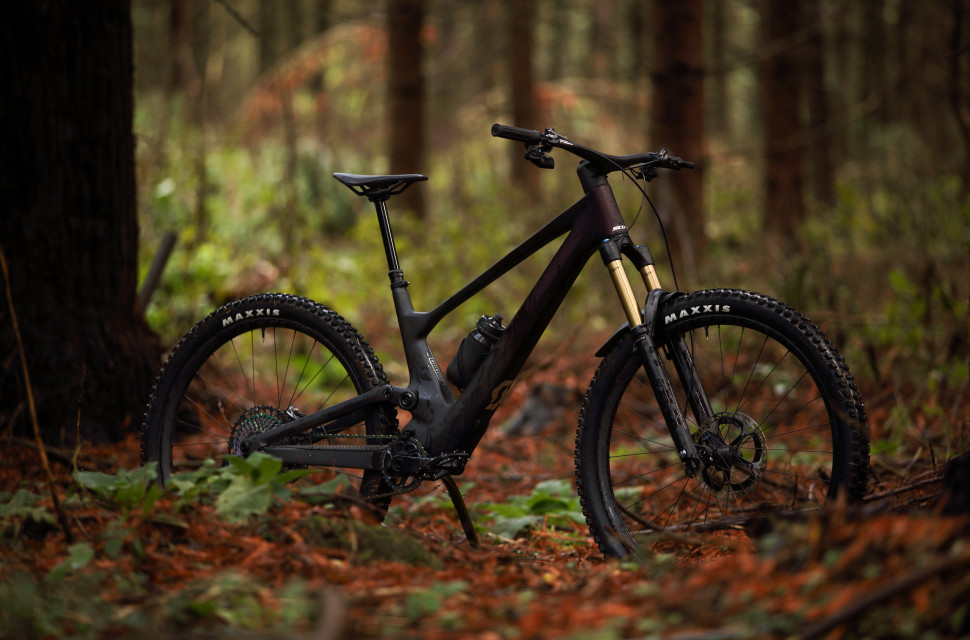

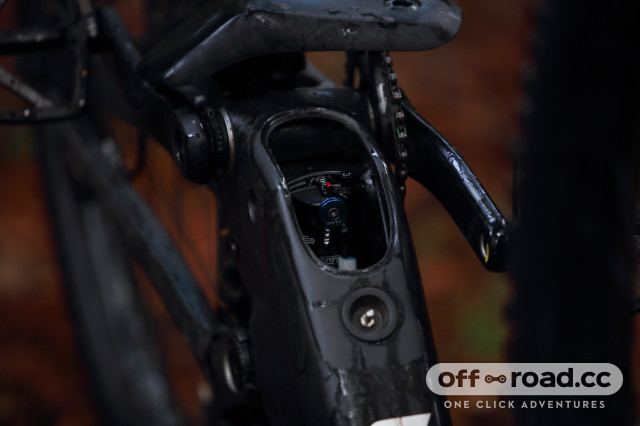








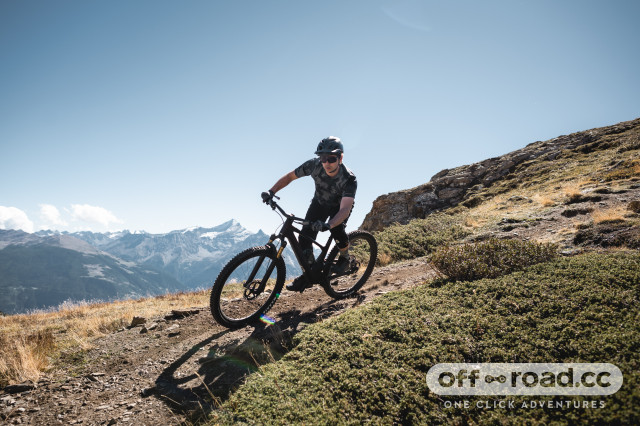



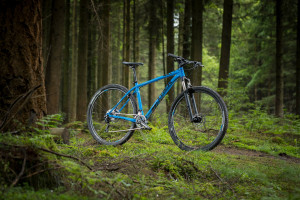

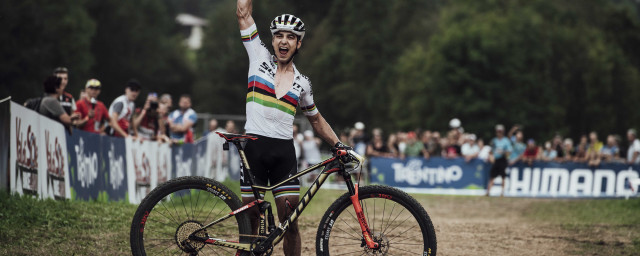
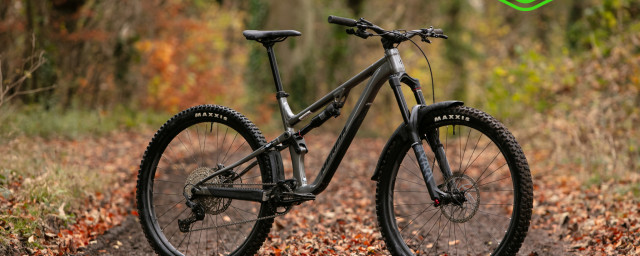

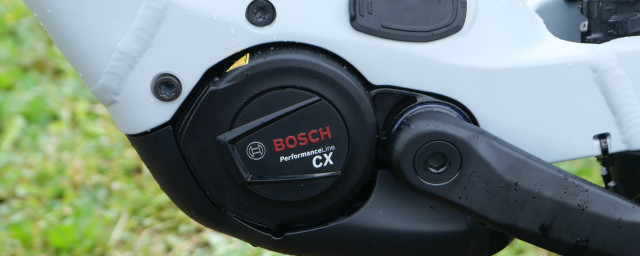




Add comment